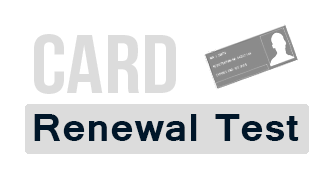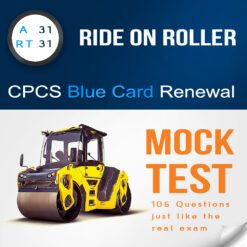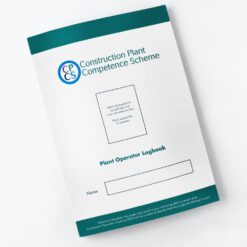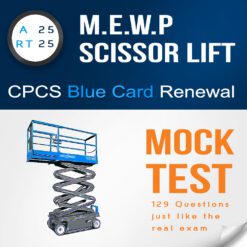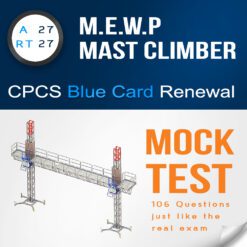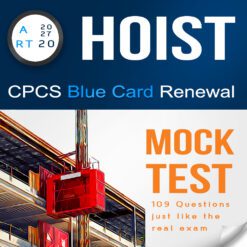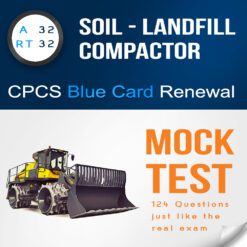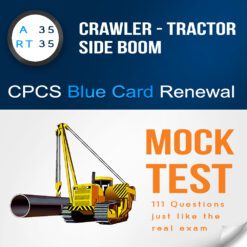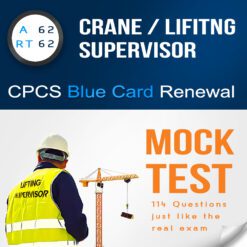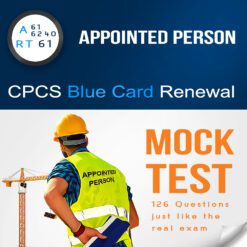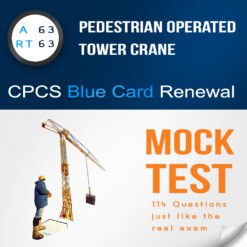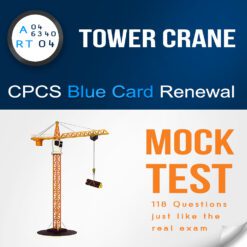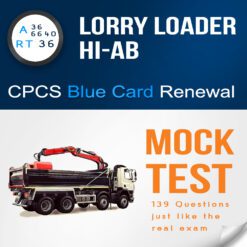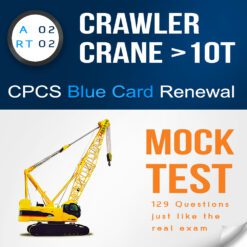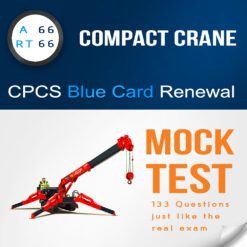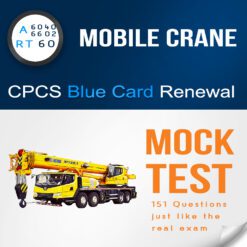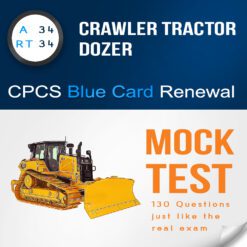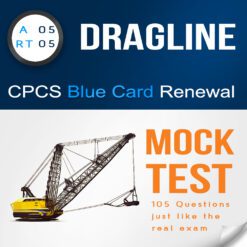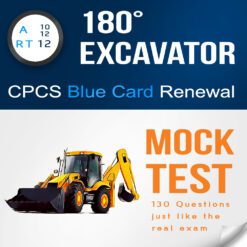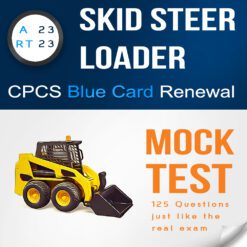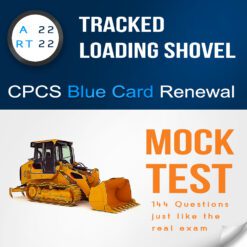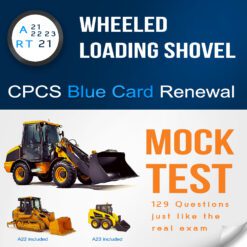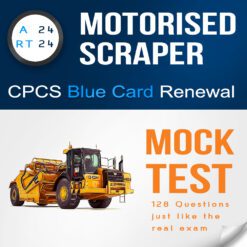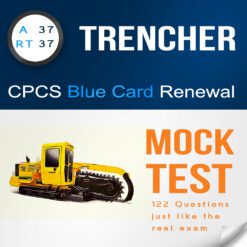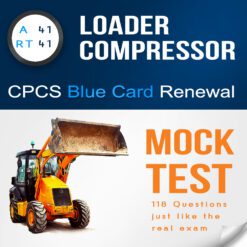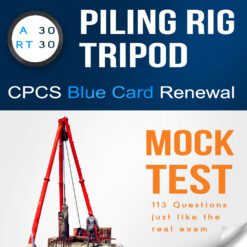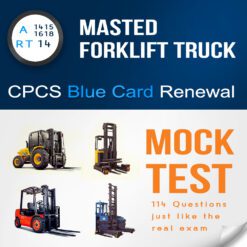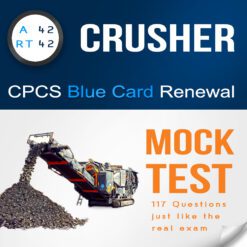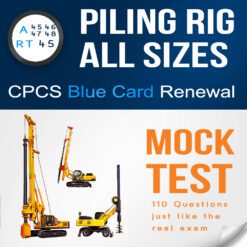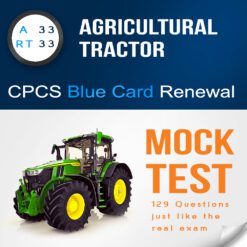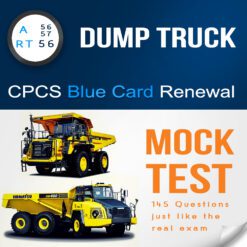1. What is emphasized regarding manufacturers’ requirements on inclines?
They are optional guidelines
They can be ignored in certain situations
They must be followed at all times
They are only recommendations
Correct Answer: C. They must be followed at all times
2. Why should the engine be switched off before leaving the operator’s seat?
To prevent unintentional movement of the roller
To comply with regulations
To save fuel
To demonstrate operator control
Correct Answer: A. To prevent unintentional movement of the roller
3. What potential consequence is mentioned if voids or soft, weak areas are not checked before compaction?
Improved roller performance
Increased compaction efficiency
Enhanced operator comfort
Roller overturning
Correct Answer: D. Roller overturning
4. What potential issue is mentioned if a roller is parked on soft ground?
Improved compaction efficiency
The roller may become overheated
The machine can sink and damage the ground
The roller may experience increased vibration
Correct Answer: C. The machine can sink and damage the ground
5. When should the articulation bar be removed from the roller?
During routine pre-use checks
Before the roller is driven off the transporting vehicle
Immediately upon arrival at the site
After the roller completes its compaction work
Correct Answer: B. Before the roller is driven off the transporting vehicle
6. Why must full all-round observation be undertaken before reversing a roller?
To prevent accidents and injuries
To comply with regulations
To show off operator skills
It is not necessary
Correct Answer: A. To prevent accidents and injuries
7. How does compaction occur?
Via the weight of the roller acting through the drum onto the ground
Through the use of vibration only
By applying heat to the ground surface
Through the use of chemicals sprayed onto the ground
Correct Answer: A. Via the weight of the roller acting through the drum onto the ground
8. What potential consequence is mentioned if the roller’s center of gravity moves sideways and exceeds the width of the drum on a steep slope?
Increased roller stability
Roller overturn
Improved operator visibility
Enhanced roller control
Correct Answer: B. Roller overturn
9. What caution is given specifically about timber ramps?
Timber ramps are the preferred choice for roller access
Timber ramps must be avoided at all costs
Timber ramps can break due to the weight of the roller
Timber ramps are suitable for any roller weight
Correct Answer: C. Timber ramps can break due to the weight of the roller
10. What is highlighted as a cause of possible instability when the roller is being driven along a slope?
Low roller speed
Excessive fuel consumption
Lack of operator experience
Slope is too steep
Correct Answer: D. Slope is too steep
11. What potential effects on others could occur if the engine of a ride-on roller was left running?
Exhaust fumes entering the work area
Improved communication
Increased safety
Better work coordination
Correct Answer: A. Exhaust fumes entering the work area
12. What is emphasized as a crucial step for the roller driver at the end of a run before reversing?
Increasing the speed of the roller
Checking fuel levels
Ensuring no vehicles or personnel are in the reversing path
Testing the reversing warning system
Correct Answer: C. Ensuring no vehicles or personnel are in the reversing path
13. How is it advised for the roller to be driven up a ramp?
Quickly and aggressively
Backward and rapidly
Forward and slowly
Sideways and cautiously
Correct Answer: C. Forward and slowly
14. What is the suggested purpose of minimizing reversing to a segregated, controlled area?
To reduce fuel consumption
To improve roller performance
To increase operator visibility
To minimize risks to pedestrians and workers
Correct Answer: D. To minimize risks to pedestrians and workers
15. Why is the roller at risk of overturning when being driven along a slope that is too steep?
Insufficient roller weight
Center of gravity exceeding the width of the drum
Excessive roller speed
Lack of proper roller maintenance
Correct Answer: B. Center of gravity exceeding the width of the drum
ride on roller, rt31 roller, citb test, nocn test, cpcs test, cpcs blue card, cpcs renewal, mock test, practice test, theory test, multiple choice, questions, answers, pdf, free mock test, free practice test, free theory test, free citb test, free cpcs test, free cpcs renewal test

